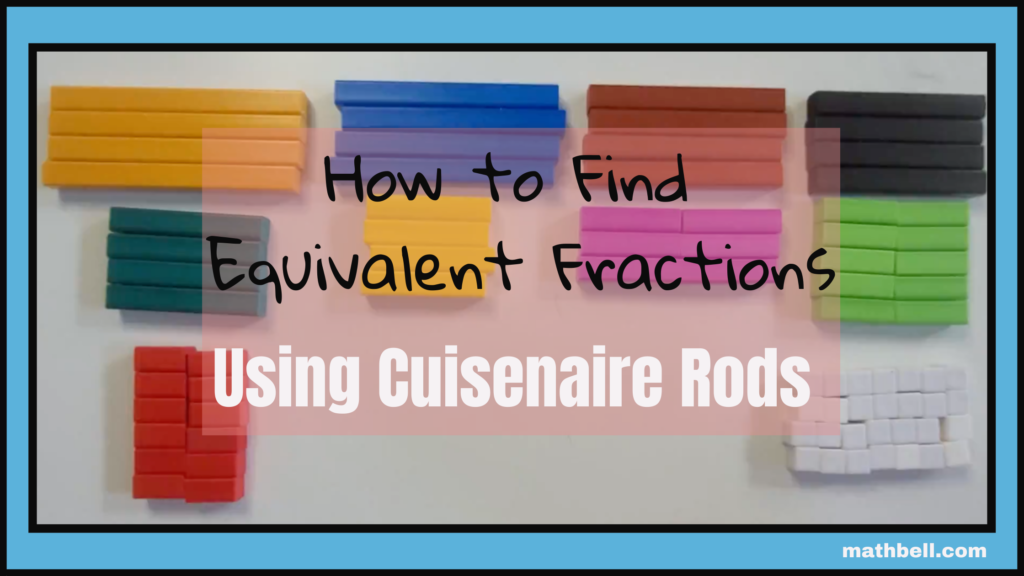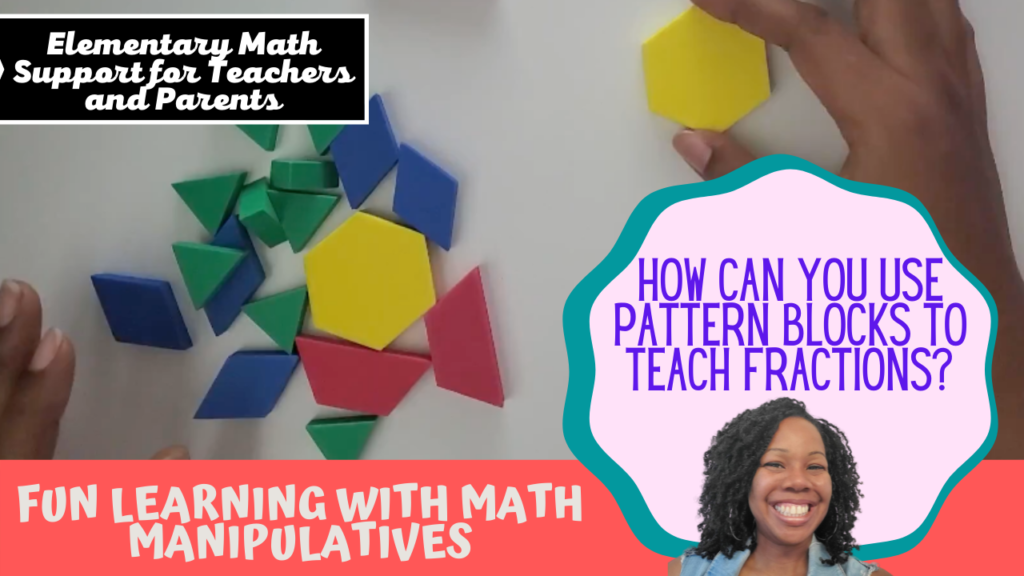In this tutorial you will learn how to find or teach equivalent fractions using cuisenaire rods.
Watch the video here to see each step in action!
Explore Equivalent Fractions Using Cuisenaire Rods
In a set of cuisenaire rods you have 10 groups of different colored rods that represent different sizes.
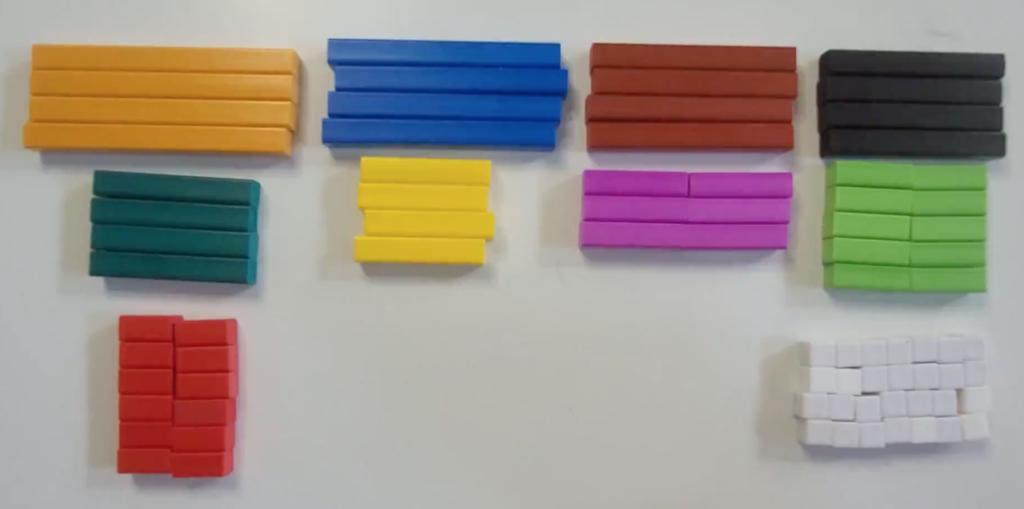
If we use the white rods to represent one unit, we can determine how many units or parts make up each other rod.
Let’s look at the orange rods which are the longest in this set.
If we line up the white rods to one orange rod, we can see that it takes 10 white rods to make one whole orange rod.
This shows us that if the orange rod is 1 whole, the size of the white rods are tenths because it takes 10 of them to make up the whole.
1 whole is equivalent to 10 tenths.
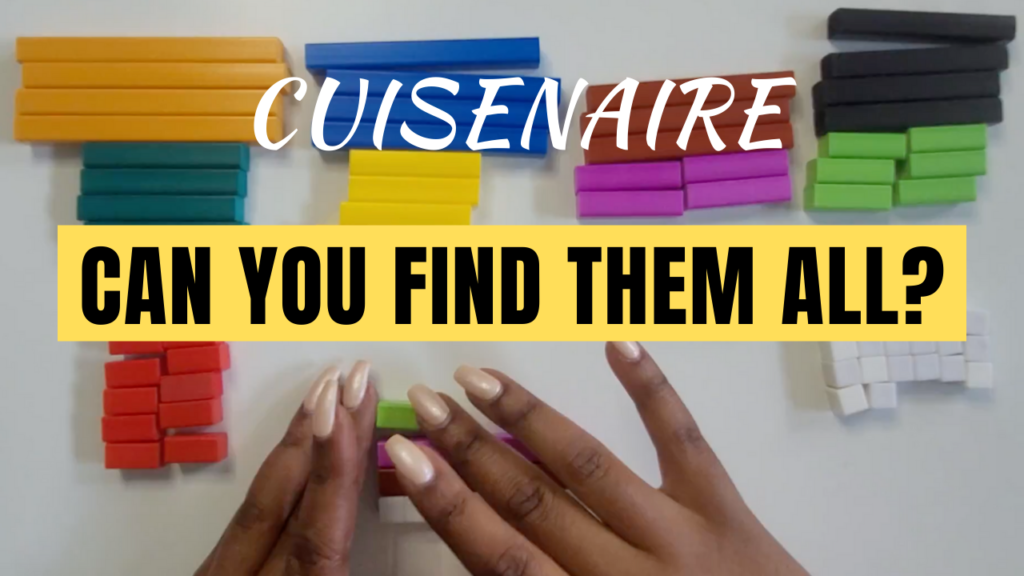
What other fractions are equivalent to 1 whole?
Looking at the blue rod, it does not completely line up with the orange rod that represents 1 whole.
If you glance at the white rods, we see that the blue rod is actually equivalent to 9 white rods or units.
Next we’ll go to the brown rod. It does not line up with the orange rod either and if we add in another brown rod, together the value will be greater than the orange rod that is representing one whole.
Comparing the brown rod to the white rods, we can see that each brown rod is equal to 8 white rods or units.
Moving on to the black rod, it does not line up equally with the orange rod, and just like the brown rod, if we add in a second black rod, together they will be greater than the orange rod that is representing one whole.
We can see that the block rod is equivalent to 7 white rods or units.
Are you starting to notice a pattern?
Next is the dark green rod. One dark green rod is just a little past half of the orange rod. Doubling the dark green rod will still create a value that is greater than one whole being represented by the orange rod.
The value of each dark green rod is equivalent to 6 white rods or units.
With the yellow rod, we can see that it is equivalent to 5 white rods or units. Knowing that 5 is half of 10, the total number of white rods or units equal to the orange rod, we now know that each yellow rod is half of one orange rod.
Since we learned that a yellow rod is equivalent to 5 white rods, we now know that 5 white rods, or 5 tenths, is equivalent to 1 half.
Two yellow rods line up equally with one orange rod that represents one whole.
When it takes two equal parts to equal 1 whole, we call those parts halves.
So 2 halves is equivalent to 1 whole.
Continuing to explore equivalency using the cuisenaire rods allows you and your students to determine which fractions are equivalent to each other and which ones are equivalent to one whole.

Let’s leave the yellow rods there for now since we found that they are equivalent to the orange rod which is, again, representing the whole.
Place the purple rods over the yellow rods to determine if they too are equivalent to the orange rod.
We can see that two of the purple rods come up just a little short and three purple rods will have a value greater than one whole.
Comparing the purple rods to the white rods or units, we see that one purple rod is equivalent to 4 white rods, or 4 tenths. And two purple rods are equivalent to 8 white rods, or 8 tenths.
Keep exploring with all cuisenaire rod colors
Next we’ll try out the light green rods.
They have a size that is equal to 3 white rods or units. Let’s add on more to see how they line up.
Two light green rods are equivalent to 6 white rods and three light green rods are equivalent to 9 white units.
They are just 1 white rod short of being equivalent to the orange rod that represents one whole. Adding in a fourth light green rod will cause the total value to be greater than one whole.
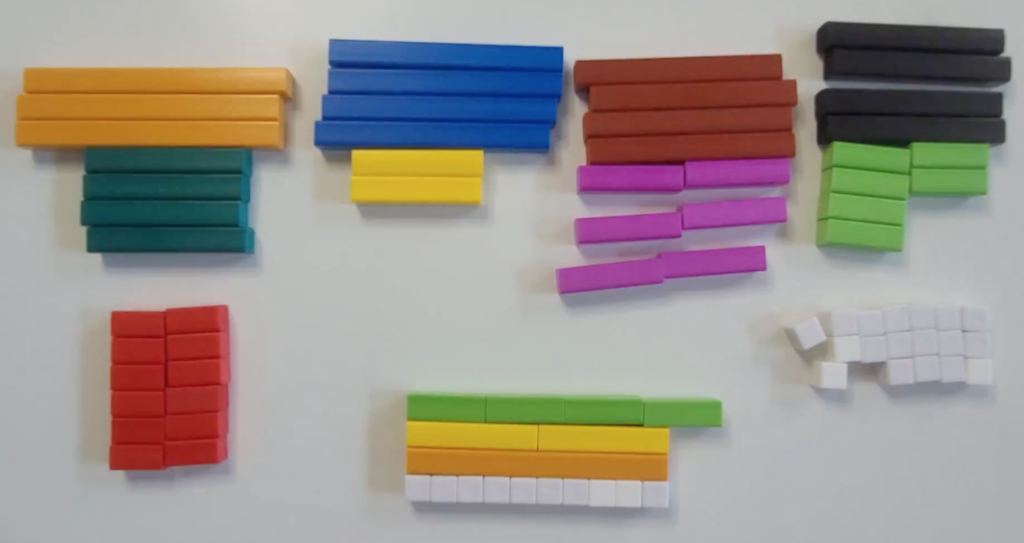
The last colored rod that we’ll try out is the red rod.
Starting out, we can see that each red rod is equivalent to 2 white rods or units. Two red rods equal 4 white rods, three red rods equal 6 white rods, four red rods equal 8 white rods, and five red rods equal 10 white rods.
Yes! We found more equivalent fractions.
It takes 5 red rods to line up equally with the orange rod that represents one whole.
Therefore they are equivalent.
Since it takes 5 of the red rods to line up with the whole, we can call them fifths.
5 fifths is equivalent to 1 whole.
Looking back at each red rod separately:
1 fifth is equivalent to to 2 tenths
2 fifths are equivalent to 4 tenths
3 fifths are equivalent to 6 tenths
4 fifths are equivalent to 8 tenths
5 fifths are equivalent to 10 tenths, which is also equivalent to 1 whole.
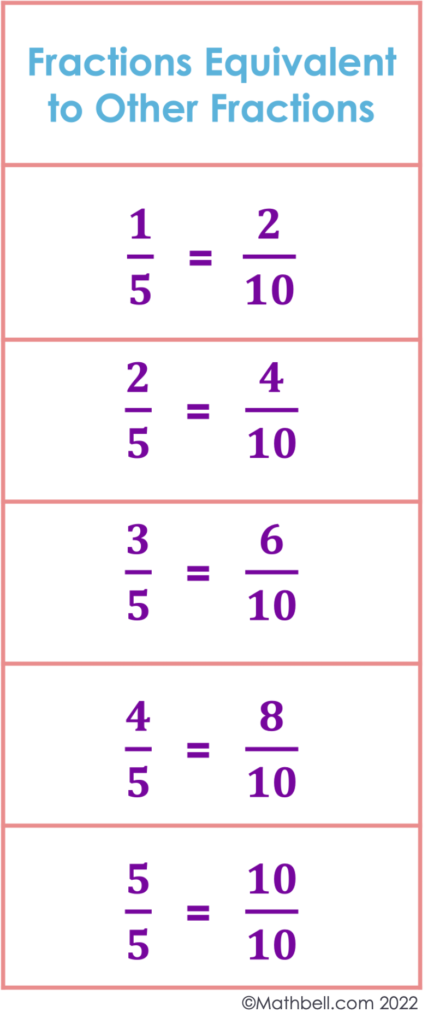
This is a great way to explore equivalency using concrete models with your students to help develop that firm foundation in equivalent fractions.
Now, what if the size of the whole was different. Will the value of the other colored rods change as well?
Let’s keep exploring!
Find Equivalent Fractions Using Cuisenaire Rods with Different Sized Wholes
In this next example, we will use the brown rod as a representation of one whole.
Comparing the brown rod to the white rods or units, we are reminded that the brown rod is equivalent to 8 white rods or units.
So the parts that make up the brown rod can be called eighths because it takes 8 equal parts to create the whole.
8 eighths is equivalent to 1 whole.
Now we’ll find out which other rods, or fractions are equivalent to this 1 whole, or 8 eighths.
We know that the orange rod will be too long and the blue rod will be too long as well.
The black rod comes close but is not quite equivalent to this whole and the dark green rod does not work out either.
Unlike in our first example, with this whole, the yellow rod is actually greater than one half of the brown rod representing the whole.
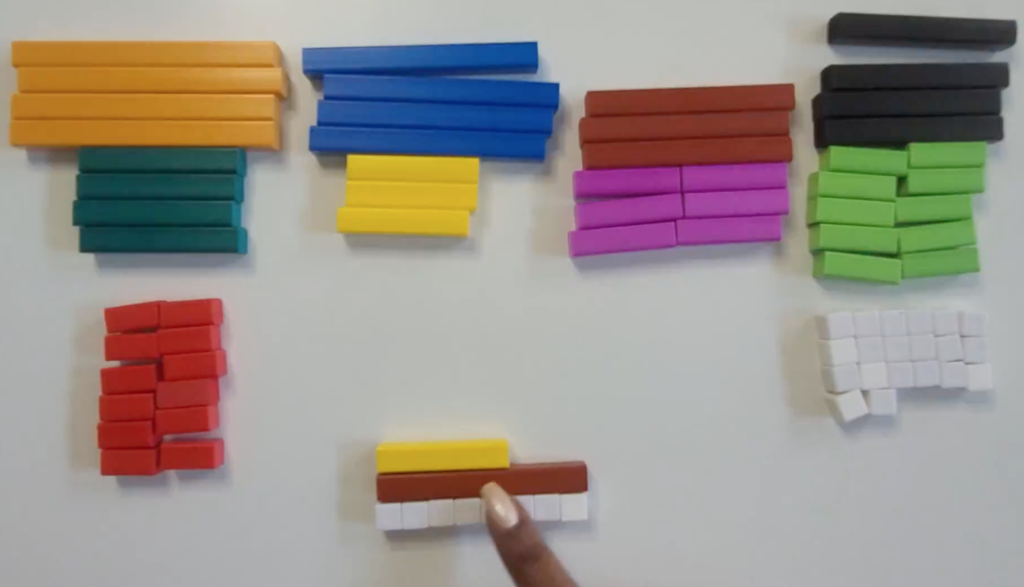
So now there is just the purple, light green, and the red rods left.
When you line up the purple rod with the brown rod, the purple rod ends at the halfway point of the brown rod.
Let’s compare it to the white rods.
One purple rod is equivalent to 4 white rods. Since the whole is equivalent to 8 white rods, we know 4 is half of 8, so yes the purple rod is 1 half of the brown rod.
This tells us that 1 half is equivalent to 4 eighths.
We learned in the first example that 1 half is equivalent to 5 tenths. Now we know that 1 half can also be equivalent to 4 eighths.
Bringing in a second purple rod, or a second half, this shows that 2 halves is also equivalent to 8 eighths, which is equivalent to 1 whole.
So far with our examples we’ve learned that 10 tenths, 5 fifths, 2 halves, and 8 eighths are all equivalent to 1 whole.
And we’ve also learned that 5 tenths and 4 eighths are both equivalent to 1 half.
Let’s try out the light green rods with this example.
Using two light green rods doesn’t quite line up with the whole and three light green rods takes the value beyond the brown rod which is representing the one whole.
Last we have the red rods.
Four red rods line up perfectly with the brown rod as one whole. We can call them fourths because it takes four of them to line up with the whole.

Again, we’ve found more equivalent fractions!
We can add these to the list of equivalent fractions we’ve discovered with the cuisenaire rods.
List of Equivalent Fractions
4 fourths is equivalent to 1 whole.
1 fourth is equivalent to 2 eighths.
2 fourths is equivalent to 4 eights.
2 fourths is also equivalent to 1 half.
Conclusion
Now you know how to find or teach equivalent fractions using cuisenaire rods.
Doing this activity is a great place to start with your students, or revisit if necessary.
It will help better their understanding of equivalent fractions.
You can continue to explore which fractions are equivalent using the sixths and the thirds.
One great feature that cuisenaire rods have is that they are not pre-labelled.
This allows students to use any of the colors as the whole and explore which other rods line up with that whole to show equivalency.
Try this out with your students and your own set of cuisenaire rods.
Get my preferred choice of Cuisenaire Rods (Plastic Set), or use these for less noise – Cuisenaire Rods (Foam Set)
Use these Cuisenaire Rods for a group of 3 – 6 students. (Small Group Set)
Or use something very closely related to these math manipulatives such as fraction tiles or fraction strips without the labels.
You can use pattern blocks too!
For more guidance on using fraction tiles or pattern blocks to explore equivalency, watch the videos below.
The most important part is that you give your students the time and opportunity to explore equivalent fractions.
Both on their own and with your support.
This is so that they are able to make connections.
And they will see for themselves what it means and looks like when fractions are equivalent.

